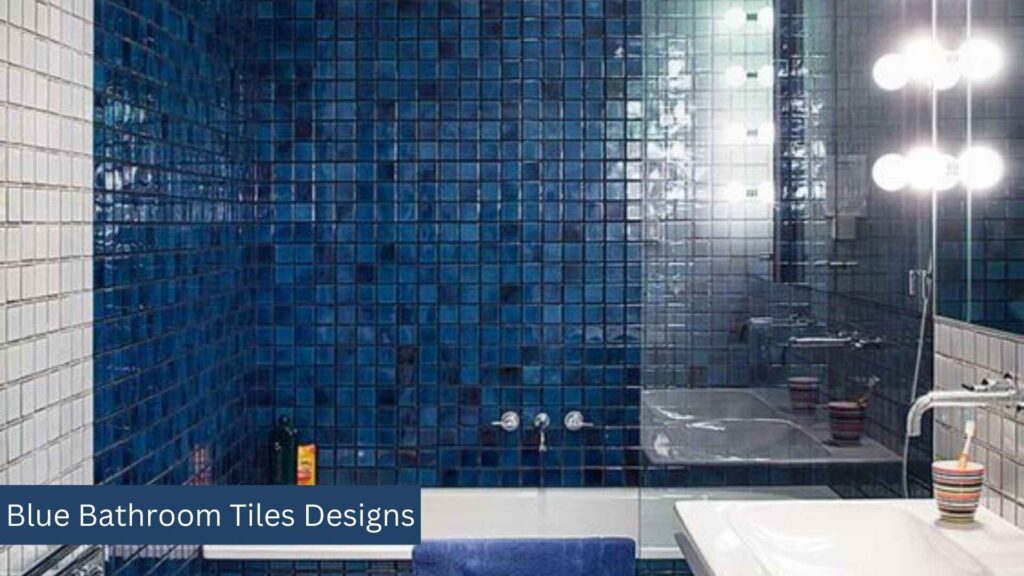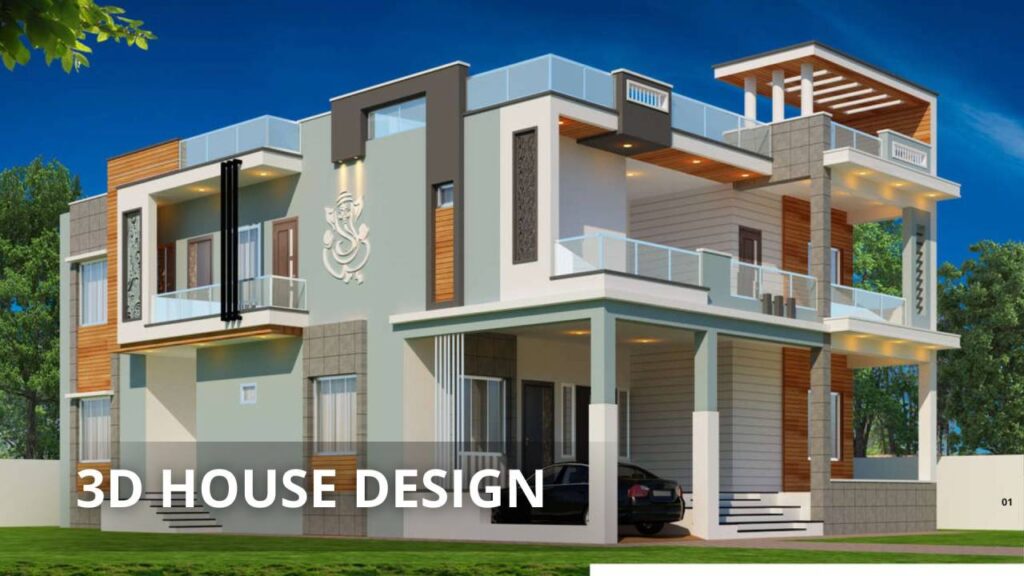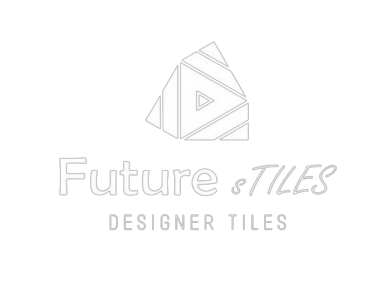20 Blue Bathroom Tiles Design for Floor and Wall

About Future Stiles Future Stiles is a relatively new player in the tile industry, but it has quickly gained recognition for its innovative and modern designs. The brand focuses on merging cutting-edge technology with artistic craftsmanship to create unique and visually appealing tiles. Facebook Twitter Instagram Linkedin Latest Post 20 Blue Bathroom Tiles Design for Floor and Wall In the world of colors, blue is generally second in popularity when it comes to tiles in bathrooms as it helps create a calming and serene atmosphere. Blue-colored tiles in the bathroom can impart a luxurious and soothing ambiance that feels fresh and calm. For those craving a seaside escape, a clean modern aesthetic, or a traditional style is evergreen, blue bathroom tiles are beneficial in many design aspects. Let’s discuss blue tiles for bathrooms, their usage in design, some tips, and the distinct types of blue bathroom tiles. Why Choose Blue Bathroom Tiles? Unlike many tiles, blue bathroom tiles are ideal in adding relaxation as well as beauty in any patterned bathroom. Let’s discuss why they are a perfect option for many: Adaptability Across Designs Blue comes in various shades and tones, thus making it easy to incorporate it into different styles. No matter the design style of the bathroom; rustic, contemporary, or vintage there are shades of blueness which are soft or dark sky blues and navy tones, always the best fit. Visual Contrast. Blue tiles provide an interesting contrast against white color and neutral elements in the bathroom space, increasing the visual impact in the design. These kinds of tiles can be utilized either as outlines or focus points of the design depending on their application. Relaxing Effect Blue has a colour that is associated with feelings of calmness. For some, the toilet sometimes acts as a sanctuary and blue tiles add to that feeling as blue helps the user think of a sauna. Types of Blue Bathroom Tiles There are different varieties of blue tiles such as the common blue tiles but they all have different appeal and texture to them. Here is a list of the commonly used ones: Ceramic and Porcelain Tiles Ceramic and porcelain are by far the most popular tile materials used in bathrooms. They are easy to maintain and water resistant and lots of shade of blue are available. Specifically, porcelain has an impressive ability to resist water and this has made it preferable for floors and wall tiles in many bathrooms. Glass Tiles Glass tiles, on the other hand, enhance the bathroom with a shiny reflective surface that creates an illusion of more space. It is easy to find glass tiles with nice shades of blue or vibrant blue glass that can make any bathroom look more luxurious. Blue glass mosaics are fashionable bathroom accents as they are used in shower walls and backsplashes. Subway Tiles Blue subway tiles are among the best bathroom tiles because they have a retro and yet modern influence. They are made in such a way that they are durability and maintenance is straightforward offering an elegant and classic appeal. With a wall of blue subway tiles alongside white details – a bathroom will look very refreshing and tidy. Marble and Stone Tiles On the flip side, blue marble or stone tiles which are natural can also be a good choice but they come at a higher price. They can complement the entire atmosphere of the place quite nicely as well because blue tones in natural stone tiles can be very vivid and attractive providing extraordinary texture and depth to the place making it feel like a spa. Moroccan and Patterned Tiles Moroccan blue tiles are exotic and lively when used in bathrooms. These elaborate designs are quite often rendered in deep blue color, make a bold statement, and add a touch of artistry to the space. Download Catalogue Design Ideas for Blue Bathroom Tiles If you’re considering blue tiles for your bathroom, here are some design ideas to inspire you: Coastal Theme with Light Blue Tiles Light blue or aqua tiles will suit a beach-themed bathroom perfectly. These should be installed on the walls or used for backsplashes and paired with sandy beige or white tiles for the floor. This color scheme gives a cool and easy refreshing beach feel for all the beach lovers. Bold and Modern with Navy Blue Tiles Midnight blue or navy blue is ideal as they are quite striking. Use white or light gray tiles for the rest of the room, but put navy blue tiles on one accent wall or the shower area. This method makes the room more dynamic and adds a sleek, contemporary appearance to the room. Classic Subway Tiles in Sky Blue Dolomite or cobalt blue subway tiles add a great touch to bathrooms. Put together in a brick pattern however classic, herringbone or vertical stacking may break the monotony and add a modern look. Blue rectangular tiles complement brass or gold fittings and accessories beautifully. Patterned Moroccan Tiles for an Artistic Look For a bolder aesthetic, blue Moroccan tiles are a wonderful inspiration. These tiles are great for use on the accent wall or shower area. These Moroccan designs are interesting and enhance the unique artisanal quality of the bathroom. Glass Mosaic Tiles for a Reflective, Spa-Like Ambiance An elegant choice for a spa-like bathroom is by using blue glass mosaic tiles. These can be placed on a feature wall or on the shower to create a reflective surface that adds depth to the room. Keeping these with minimalist fixtures will avoid distraction from the tile decor. Ombre Blue Tiles for a Gradient Effect For a creative look, consider an ombre effect with blue tiles. This can be achieved by arranging tiles from dark to light, creating a gradient that adds depth and intrigue to the bathroom. An ombre wall in shades of blue can create a stunning visual impact. Tips for Using Blue Bathroom Tiles Effectively Although blue tiles may transform the look of the bathroom, there are some
3D House Design in 2024: Revolutionizing Home Architecture

About Future Stiles Future Stiles is a relatively new player in the tile industry, but it has quickly gained recognition for its innovative and modern designs. The brand focuses on merging cutting-edge technology with artistic craftsmanship to create unique and visually appealing tiles. Facebook Twitter Instagram Linkedin Latest Post 3D House Design in 2024: Revolutionizing Home Architecture The advancement of 3D home design has brought about a paradigm shift in the architecture and construction industries. The advent of technology that allows people to visualize, change, and adjust their home designs before any single brick is laid is changing how we think about and build homes. This new house design approach is more precise, detailed, and adaptable for homeowners and professional builders. What is 3D House Design? 3D house design involves creating real-life representations of a house’s architectural structure using three-dimensional modeling software. Unlike conventional two-dimensional blueprints that can be seen only from above on paper screens or boards, three-dimensional models show an entire building from all directions. Such information as general structure, arrangement, or detailing up to the smallest things like furniture arrangement, lighting fittings, or textures are included in this category. Consequently such kind of virtual model provides grounds for interactive exploration and detailed visualization of the whole property. The Advantages of 3D House Design Enhanced Visualization One important advantage of 3D house design is the ability to see exactly what it will look like as the final product. Homeowners and architects can walk through virtual spaces, understanding how rooms will look and feel. The proportions are better understood through this experience as well as the flow between rooms; Improved Communication In addition, 3D house design has an important advantage of being able to see the final result of a house. Homeowners and architects can virtually explore rooms thereby comprehending how they will appear in real life. This experience helps understand proportions as well as transitions between spaces. Precise Planning To design a house that considers every small aspect of it from overall structure to little details like fittings and finishes need for flow is very crucial in 3D modeling. It minimizes errors during construction thus saving time and money. Cost and Time Efficiency 3D House designing detects potential problems at an early stage before putting them into practice. Additionally, contractors get approvals faster due to the easily understandable project as opposed to projects having to go through many revisions or alterations. Customization and Flexibility The freedom provided by three-dimensional design tools is incomparable. Property owners can try out different arrangements, designs, and color schemes instantaneously observing their choices’ consequences. As such, the last plan agreed upon will be entirely consistent with the client’s needs and lifestyle. The Process of Creating a 3D House Design There are many steps involved in creating 3D house designs each with its own specialized software and skills needed. Here is a quick rundown: Initial Consultation and Concept Development The process begins with the first consultation between the architect and the client. At this stage, the architect collects information about the client’s needs, preferences, and budget. They form a basis for a conceptual design that includes basic floor plans and rough sketches. 3D Modeling After deciding on a concept, the architect then uses 3D modeling software to produce a detailed virtual model of the house. The model can also contain exterior and interior designs including landscaping as well as furnishings. Advanced software allows for precise representations of materials, lighting, and textures, giving it a realistic look. Virtual Walkthroughs and Adjustments Once construction is finished and all major changes are done to completion, clients can take virtual walkthroughs of what their future home will look like. Such an exercise helps in making adjustments or refinements where necessary. For example, clients can move walls around, change window sizes, or even try out different paints and see how they impact on overall design. Final Design and Documentation Whereby this happens and customers are happy with everything that has been changed within the building structure, a final 3D design shows any detailed construction documents used in its preparation. These include floor plans among others which are derived from 3D models (Wambugu & Odour 2014). This detailed document makes it easy for anyone interested in constructing this house to have all it takes. Software Tools for 3D House Design Different software tools can be used in the creation of 3D house designs, each of which has a variety of features and capabilities. Some of the most common ones are: SketchUp: Famous for its user-friendly interface, SketchUp is the top choice both for professionals as well as hobbyists. It comes with various tools that will help you design detailed 3D models together with an extensive library packed full of ready-made objects. AutoCAD Architecture: This is an AutoCAD version created specifically for architectural design; it has advanced tools that enable the creation of highly detailed 3D models and construction drawings. Revit: Revit, developed by Autodesk, is a forceful Building Information Modelling (BIM) tool that creates highly detailed three-dimensional models with structural, electrical, and plumbing systems hence suitable for complicated projects. Blender: Besides being mostly used for three-dimensional animation and rendering purposes, Blender’s sophisticated modelling tools have made it to become a good option for architectural designs. Chief Architect: The program is mainly created to fit in residential design. It incorporates strong features that let users create detailed 3D models including realistic materials and lighting simulation. Download Catalogue 3. Focus on Lighting Architects and designers use 3D house designing for a variety of applications, not just as a tool in the profession: Before starting construction work, homeowners can see exactly how their new home will look like. This helps to remove indecision or uncertainty and it guarantees that the project meets the clients’ aspirations. Plan Renovation: For renovations, 3D design enables homeowners to visualize changes before they are made for large-scale renovations with structural modifications. Market Real Estate: Real estate developers use 3D models to market and advertise their new developments
